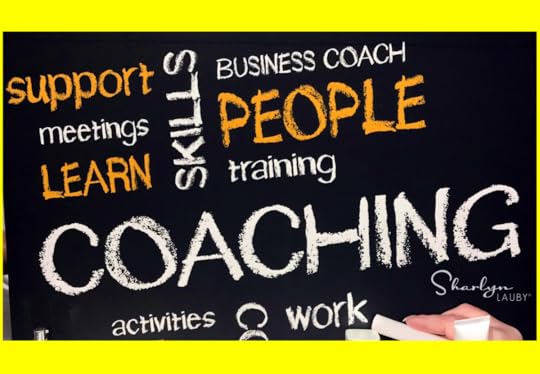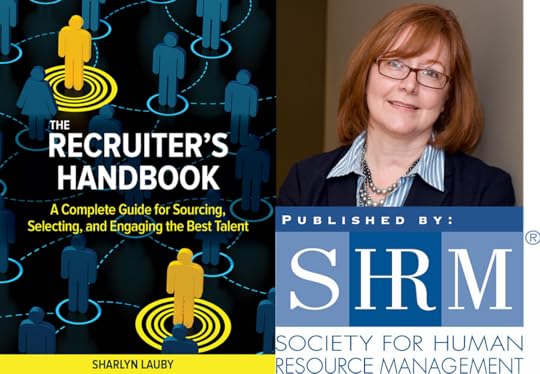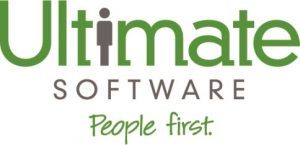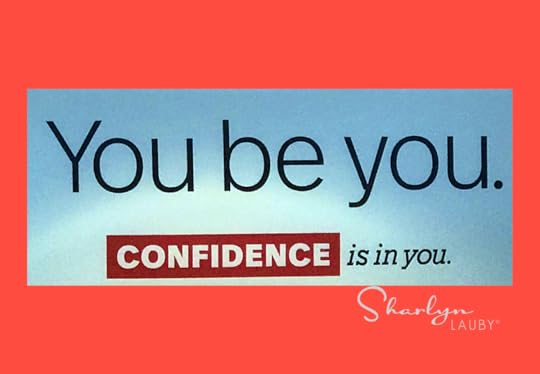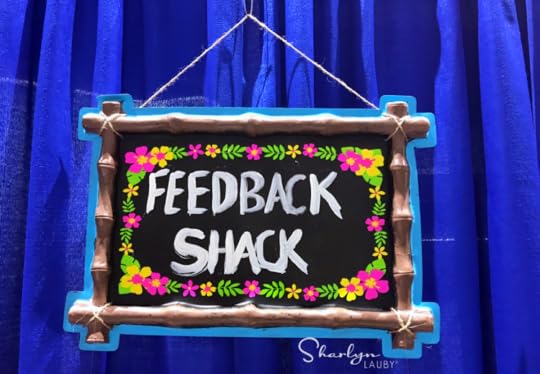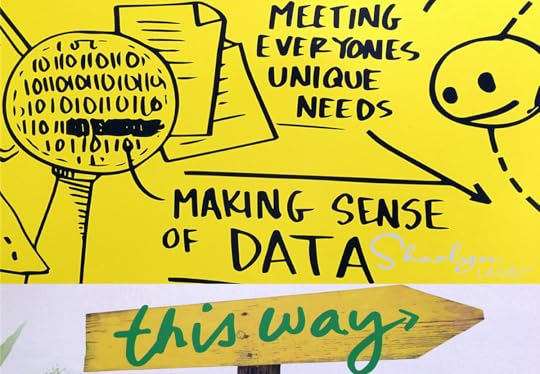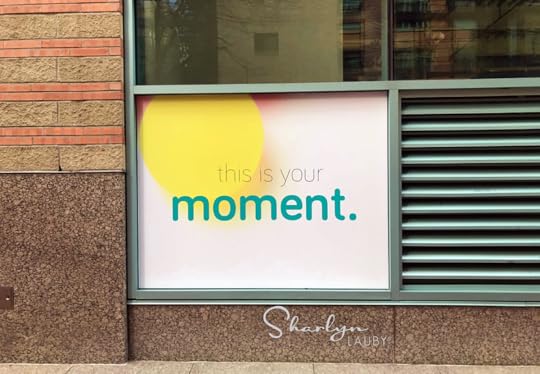Sharlyn J. Lauby's Blog, page 116
June 15, 2018
How to Find Mentors Who Will Support Your Goals
(Editor’s Note: Today’s post is brought to you by our friends at Capella University. Capella is an accredited online university dedicated to providing an exceptional, professionally-aligned education that puts you a position to succeed in your field. They offer bachelor’s, master’s, and doctoral degrees as well as certificate programs for human resources and business professionals. Enjoy the post!)
Over the past couple of weeks, our Friday posts have been focused on career development. First, we talked about finding time and having a busy professional life. Then, we talked about being ready to ask for opportunities. In this article, I want to talk about having a base of support.
Even when we can get the time and money to pursue learning and education, we can’t do it alone. We need people around us to support our efforts. Whether that’s making dinner while we’re studying for a certification exam or cutting us some slack when we’re tired after a long week of school and work. Support could also come in the form of gently nudging us when we don’t feel like studying (but we know we really need to).
That’s where mentors can come in. Mentors are people who can offer advice and counsel. They can give you tips to be productive and encouragement to stay focused. But not all mentors are the same. And in some situations, it makes sense to choose your mentors for the task at hand.
For example, let’s say you’re attending the Society for Human Resource Management (SHRM) Annual Conference and Expo in Chicago next week. You might want to stop by the Capella University booth (#3750) at the conference and talk with them about the scholarship opportunities they’re offering. There’s a $2,000 scholarship for new students who enroll in their Master of Science in Human Resource Management program.
If you’re goal is to pursue a degree, then think about the mentors who will help you get there. At this point, don’t think about long-term formal mentoring programs. Instead, see if you can identify individuals who have:
1) Attended Capella and can offer some insights.
2) Received a graduate degree.
3) Worked and attended school at the same time.
4) Recently transitioned into a business or HR role.
You see where I’m going with this. There’s no rule that says you have to limit yourself to one mentor. So, find mentors that can provide value toward all of the goals you’re trying to accomplish. SHRM Annual and Capella University are a great place to start.
P.S. If you’re not attending the conference, check out the other business scholarships opportunities that Capella has to offer for their bachelor’s, MBA, and doctoral programs:
Up to $8,000 for BS in Business
Up to $2,500 for MBA
Up to $7,000 for DBA and $8,000 for PhD in Business Management
The post How to Find Mentors Who Will Support Your Goals appeared first on hr bartender.






June 14, 2018
Organizational Talent Pools: 4 Steps to Developing Employees
(Editor’s Note: Today’s article is an excerpt from my new book, “ The Recruiter’s Handbook: A Complete Guide for Sourcing, Selecting, and Engaging the Best Talent “ (SHRM, 2018) SHRM members can order a discounted copy at the SHRMStore. Or I’ll be signing books next week at the SHRM Annual Conference in Chicago. Stop by and say hello!)
With unemployment rates hitting record lows, there’s lots of talk about developing internal talent. One way to do that is with talent pools, which are groups of employees who are being trained and developed to assume greater responsibilities within the organization. Often, but not always, they have been identified as high-performing and high-potential individuals.
Talent pools allow organizations to develop employees in areas that align with company competencies and values instead of focusing on developing specific position skills. This allows a talent pool to address the biggest challenge with succession planning, which is telling individuals they’re part of the plan. Organizations can communicate to a group, “You’re the future of the company,” instead of telling an individual, “You are our next chief marketing officer.”
In addition, talent pools provide the flexibility needed in emerging or developing industries. Some industries are moving so quickly that they don’t know what next year looks like, much less what their five-year recruiting strategy should include. That unpredictability can make traditional succession planning efforts difficult and talent pools an ideal tool.
However, creating a talent pool takes some planning. Here are four proven steps to developing an organizational talent pool for your organization:
Review the organizational strategies.Much of the information regarding the strategies has already been gathered as part of the workforce planning activity. So, the goal here is to identify the competencies needed to make those strategies happen. In the future, the strategies will change, but the competencies may remain the same. An example is critical thinking skills. Regardless of the strategy, critical thinking is a necessary competency.
Assess the company’s current talent to identify any skills gaps.Again, this information was gathered during the staffing analysis and workforce planning activity. Organizations can accomplish this step using a variety of techniques, including performance reviews, assessments, multi-rater feedback, and interviews. A combination of techniques could prove to be exceptionally valuable. The key consideration is consistency.
Create modules or groups of activities that will help employees learn the skills they need.Once the organization identifies the skills it will help employees develop, recruiting can work with learning and development to figure out the process. A combination of internal and external training and project-based learning may be useful. Three activities proven to be very effective include:
Management coaching. Good managers have valued relationships with their employees. They are positioned to deliver open, honest feedback that can help employees change behaviors and improve performance.
Peer-to-peer feedback. Organizations spend an incredible amount of time collaborating. Peer-to-peer interaction is how most employees spend their time. Training employees to deliver timely, specific feedback can make an impact.
Mentoring. Organizations can encourage mentoring relationships to cover topics that don’t necessarily warrant a training program—like office politics and negotiation skills. Employees can benefit from the wisdom of experience.
Monitor progress and make regular adjustments. Like succession planning and recruiting strategies, talent pools need to be monitored. The organization should conduct regular talent assessments and observe market conditions. Both internal and external factors can prompt a change in talent development strategy. The talent wars aren’t going away anytime soon. Organizations must think about the future. They are not going to be able to find all the talent they need via external recruiting. Talent pools allow companies to develop future talent from within. They also give businesses the flexibility to meet their fluid operational needs.
Talent pools offer flexibility to business needs while at the same time preparing high-performing employees for the future. They do require organizations to conduct a gap analysis, identify skills that need development, and implement a career development program to address the gap. However, the result is an internal talent pipeline that the organization needs to be successful.
The post Organizational Talent Pools: 4 Steps to Developing Employees appeared first on hr bartender.






June 12, 2018
Employee Retention is Everyone’s Responsibility
I came across this article recently on Undercover Recruiter titled, “Why Employee Retention Should Be a Talent Acquisition Responsibility”. It’s a good read worth checking out. My takeaway was that talent acquisition professionals play a role in employee retention. They do this by designing a good hiring process. One that accurately reflects the culture of the organization. And selecting candidates that will fit with the company culture. Lastly, they make sure the transition from candidate to employee is a smooth one.
But let’s be clear. Talent acquisition professionals aren’t the only ones responsible for employee retention. Everyone in the organization plays a role in employee retention. Let me repeat that. Everyone has responsibility for employee retention. From the manager who coaches the employee to the co-workers who work with employee to the customers that the employee interacts with. They all play a part in whether the employee stays with the company or goes.
Organizations are very focused on employee retention right now. As they should be. Turnover is expensive both in terms of hard costs as well as the drain on morale and productivity. There are some things that organizations can do to help everyone understand their role in employee retention.
Let managers know that employee retention is a priority. I’m not suggesting that there won’t be times when an employee leaving isn’t a good thing. Sometimes employees should leave the organization because they aren’t the right fit. Or they want experiences that the company can’t provide. But there are times when employees leave, and it could have been avoided.
Use stay interviews to find out what employees are thinking. Stay interviews are designed to help organizations identify what makes employees stay with the company. This information can be useful in recruitment marketing. It can also keep organizations from making changes that employees may leave the company over (like a major overhaul of a popular employee benefit).
Create buddy and mentor programs to encourage peer-to-peer relationships. Many organizations focus on managers building relationships with their teams – which is essential. But how much time is spent on developing team relationships. There are times when employees want someone to talk to, but not a member of management or human resources. Give them a way to form internal networks that will help them through tough times.
Train and empower employees to solve customer problems. I mentioned earlier in this article that customers play a role in employee retention. Educating customers and setting expectations is important. And sometimes companies create policies and procedures that infuriate customers. Employees get the brunt of that anger. At some point, an employee might say, “Hey – I’m not putting up with this anymore. The company doesn’t care about its customers. I’ll go someplace that does.”
Realize resignations aren’t the end of working relationships. I know this article is all about retaining employees but keep in mind that, when employees leave…they can return. Provided the company has a defined offboarding process that allows individuals to exit with respect. With unemployment numbers at historic lows, reengaging with former employees is a definite possibility, even if its’ just for freelancing or contract assignments.
The conversation about how to improve employee retention continues to happen. We spend a lot of time focused on engagement and the employee value proposition. It takes everyone working together to create a workplace that employees want to be a part of – and stay a part of. Ask yourself, “What can I do to help employee retention in the organization?”
Image captured by Sharlyn Lauby outside of Caesar’s Palace in Las Vegas, NV
The post Employee Retention is Everyone’s Responsibility appeared first on hr bartender.






June 10, 2018
Everything #HR Needs to Know About Artificial Intelligence
 Over the past few months, we’ve talked about chatbots and machine learning. It only seems logical that we should have a discussion about artificial intelligence (also known as AI). While these terms are often used in the same sentence, the more I learn, the more I realize that there are subtle nuances in each.
Over the past few months, we’ve talked about chatbots and machine learning. It only seems logical that we should have a discussion about artificial intelligence (also known as AI). While these terms are often used in the same sentence, the more I learn, the more I realize that there are subtle nuances in each.
Many human resources departments are looking at these approaches to scale their efforts and bring consistency to their activity. While HR isn’t going to have to do the programming, they do need to know enough to guide the conversation and make decisions about what’s best for the company.
To help us understand more about artificial intelligence, I reached out to Armen Berjikly, senior director of strategy at Ultimate Software, where his expertise in human-computer interaction drives Ultimate’s transformative artificial intelligence platform and direction. I’m thrilled that Armen agreed to share his knowledge with us.
Let’s start with a definition. What is artificial intelligence (AI)? And how does it differ from concepts like emotional intelligence (EI)?
[Berjikly] First, AI is an approach, not a specific skill. There’s a professor at Georgia Tech named Charles Isbell who has a fun way of defining AI: ‘making computers act like they do in movies.’ Another way to look at it: AI is ‘what’s next.’ It’s a constantly moving target focused on providing the answer to the biggest technology challenges.
My worldview is that AI is the ability for a machine to learn new things from its environment that it wasn’t initially programmed to do. I also think what AI learns should be interesting, and not obvious to people.
Emotional intelligence, on the other hand, is probably best defined by having and displaying empathy. For example, to know what someone is feeling, even when their words tell you something different. You can, of course, have AI with characteristics of emotional intelligence (back to making computers act like they do in movies!)
Can you point us to an example of AI that we may already be using or familiar with?
 [Berjikly] AI is all around us, and due to its loose definition (a machine that mimics human behavior and makes ‘smart’ decisions), you don’t have to look very far to find it. Siri, Alexa, Google Home, Cortana—these are all examples of machines we talk to, that try to figure out from our speech what we’re saying, and then do what we ask of them.
[Berjikly] AI is all around us, and due to its loose definition (a machine that mimics human behavior and makes ‘smart’ decisions), you don’t have to look very far to find it. Siri, Alexa, Google Home, Cortana—these are all examples of machines we talk to, that try to figure out from our speech what we’re saying, and then do what we ask of them.
Navigation apps like Google Maps is another example. We’re in the driver’s seat, looking for a way home. Behind the scenes, an AI toolkit is crunching live and historical data to actively predict the best route and determine how long it’ll take to get there.
Yet another: SPAM filters. Every time you receive a new email, the machine determines whether it’s something you’ll want to read, even though it’s likely never seen that particular combination of words and email addresses before.
How should we view Artificial Intelligence – User interface? Chatbot? A little of both? Or possibly neither?
[Berjikly] AI can be viewed as an enabling platform. I think AI, as a concept, can be quite meaningless by itself. But it provides a meaningful foundation—and you can build some interesting things on top of an AI view of the world. So, in this instance, AI can power a user interface or a chatbot to understand, reply to, and act on inputs.
There’s lots of talk about AI replacing jobs, which can be perceived as a bit scary. But I have to think AI can also make work better. Can you share an example where AI makes jobs easier?
[Berjikly] The application of computers automating people’s tasks is not AI—that’s simple automation, because there is no active learning involved. The systems are taught a specific thing to do, and they mindlessly do it repeatedly.
By contrast, I believe AI’s place in the world should be to relentlessly help us do the high-value things we want to do, but often cannot because we get bogged down by everyday challenges. By offloading the things that we as people struggle with, such as making sense of lots of high-volume, complicated data while countering fatigue and helping us discover meaningful insights we wouldn’t have been able to on our own.
Radiology is great example, where the machine will augment a radiologist without a hope of replacing them. With AI being able to sift through massive amounts of information with perfect memory and tireless resolve, radiologists can be sure they’re getting a deeper look. The question of what to do with those results isn’t something the machine’s aiming to answer. That’s ultimately up to the radiologist, who has a vast amount of qualitative experience and can use that information to make a more informed decision.
You’ve shared how AI can make work better. Let’s talk about the other side. Name one thing that companies need to be watchful (or cautious) about when it comes to AI.
[Berjikly] A potential concern with AI is the fear and uncertainty it can introduce into an organization if it’s brought into a company without a clear purpose. Technology for technology’s sake—or an implicit embrace of technology to cut costs and increase efficiency—can have a vastly counterproductive effect on the people who have to use it and ensure its success. Instead, companies should have realistic goals, a path in mind, and a vision of how AI can help employees unlock their full potential.
If HR pros can only focus on 1-2 aspects of Artificial Intelligence, where should they spend their time?
[Berjikly] Companies should fear being absorbed into the hype of new technology that’s applied without a purpose. With AI, we should focus on helping people fulfill their career ambitions and limit the thought of complete automation or employee replacement—both because it’s often entirely unrealistic and it’s not healthy to look at your organization and only see opportunities for cutting costs. Employees create the value of an organization and equipping them with exciting technology can help further drive value to the business.
Put another way, we shouldn’t be aiming for the goal of running HR with a joystick. HR is populated with people who care deeply about the creation, growth, and success of their teammates and, by extension, their organization. Until now, they’ve been hamstrung by a lack of products and tools that truly help them solve the big problems, and they’ve been derailed by workflows and workarounds.
The new world of AI gives us a chance—one that we’ll have to carefully nurture—to solve problems the ‘right’ way, with people top of mind. Technology should meet us as we are, and not the other way around.
Many thanks to Armen and the Ultimate Software team for sharing their knowledge with us. Obviously, we’ve only just scratched the surface of what chatbots, artificial intelligence, and machine learning can do for our organizations. But I’m convinced that, as we read more and ask more questions, HR professionals will be well positioned to make the right decisions for their organizations, which in the end means a great candidate and employee experience.
Image captured by Sharlyn Lauby on the streets of Fort Lauderdale, FL
The post Everything #HR Needs to Know About Artificial Intelligence appeared first on hr bartender.






June 8, 2018
3 Strategies for Investing in Yourself
(Editor’s Note: Today’s post is brought to you by our friends at Capella University. Capella is an accredited online university dedicated to providing an exceptional, professionally-aligned education that puts you a position to succeed in your field. They offer bachelor’s, master’s, and doctoral degrees as well as certificate programs for human resources and business professionals. Enjoy the post!)
Last week, I mentioned how work/life balance extends to our own career development. But I’m not naïve. I do realize that, for some, taking the time and dedicating the resources for career development strategies can be hard. We might not always have the time or the money to make things happen the way we would like.
But there are some things we can do. I’ve always loved the quote from best-selling author Nora Roberts, “If you don’t ask, the answer is always no.” So, if you’re looking for ways to keep your career development efforts moving forward, here are three things you can consider asking for:
Books. Personally, I enjoy learning through reading. And there are books on the market for just about everything. Books are especially good if you’re trying to learn a process. For example, let’s say one of your strategies is to learn more about human resources metrics. I’d recommend asking your boss for a copy of “How to Measure Human Resource Management” by Jac Fitz-enz. A book is reasonably priced, allows you to learn at your own pace, and you can keep it on your bookshelf for future reference.
Education. Capella University is offering a scholarship opportunity to attendees at this month’s Society for Human Resource Management (SHRM) Annual Conference and Expo in Chicago. The $2,000 scholarship is for individuals interested in theirMaster of Science in Human Resource Management program. One additional “ask” to consider is going to your company and asking them to match the dollars if you’re awarded the Capella scholarship.
Experiences. In many organizations, work experiences allow employees to learn, grow, and get exposure to individuals they wouldn’t typically meet. It could be a task force, implementation team, or a committee. Sometimes these opportunities are disguised as boring assignments that no one wants. Don’t be afraid to volunteer and give it your all. In these strategies, the return on your time investment could be very valuable.
I’d like to think that everyone knows how important it is to be a lifelong learner and to continuously make investments in their career development. But all learning opportunities don’t look the same. And sometimes we have to ask for them. Because, if we don’t, the answer is always no!
P.S. Capella also offers additional business scholarshipsfor their bachelor’s, MBA, and doctoral programs. You may be eligible to receive:
Up to $8,000 for BS in Business
Up to $2,500 for MBA
Up to $7,000 for DBA and $8,000 for PhD in Business Management
The post 3 Strategies for Investing in Yourself appeared first on hr bartender.






June 7, 2018
Management Is Not Helping Me – Ask #HR Bartender
Today’s reader note is a toughie. What do you do when it doesn’t look like anyone is supporting you?
I have been a nurse for 32 years. I’m being harassed by a new manager reporting false allegations against me. I think he has an instant dislike for me. I have been intimidated by HR, harassed previously by my director, and now given a formal final disciplinary warning. This is my first warning in 32 years. Management is not helping me.
Like I said, this is a tough situation. We don’t know what allegations the manager has made. We don’t know if HR conducted an investigation and what they found (or didn’t find). So, it’s hard to give this reader any kind of specific suggestions. There are a couple of things we can do.
First, we’ve published in the past a couple of articles about HR and investigations.
What to do when HR doesn’t listen
HR failed to investigate an incident
We’ve also talked about management regarding progressive discipline and suspensions.
How to handle a work suspension
What to do if you’re placed on suspension
But the post I want to direct you to is this one:
Should I quit or wait to get fired?
I don’t know who is right or wrong in this situation. We just don’t have enough information. What I do know is that this reader feels they’re doing all the right things, but they’re getting disciplined, and they’re not happy about it. At some point, you have to ask yourself, “Is this the kind of organization I want to work for?”
If the answer is “yes”, then figure out how to keep your job. Go to your manager and tell them, “Hey – I really enjoy working here. What do I need to do to improve my performance?” Be prepared to listen. Your manager should be able to tell you where they feel your performance isn’t meeting the standard. If they can’t, then ask yourself the question again, “Is this the type of manager I want to work for?”
And if the answer is “no”, then figure out how you can go someplace where your skills will be appreciated. I get it. Looking for a new opportunity is time-consuming, a little scary, and it can be more than a little frustrating. But the reward is going to a work environment without “managers making false accusations”, “intimidation by HR”, and “harassment”. The reward is being able to focus on your work, not management, and building positive relationships with others.
I wish I had a neat and tidy response to issues like these. But sometimes they just don’t exist. Employees have to decide, based on the situation and their career goals, what option works best for them. I can say it’s important that employees really think through what they want because that often sheds light on the answer they’re looking for.
Image captured by Sharlyn Lauby after attending the WorkHuman Conference in Austin, TX
The post Management Is Not Helping Me – Ask #HR Bartender appeared first on hr bartender.






June 5, 2018
New Hires Not Engaged? How to Design an Onboarding Intervention
(Editor’s Note: Today’s post is brought to you by our friends at Readex Research, which provides expert survey services to help businesses understand their internal and external customers. Their services include employee experience surveys. Enjoy the post!)
According to the most recent data from Society for Human Resource Management (SHRM), the average time to fill is 36 days. For many organizations, this is a long time. So, when new hires arrive, the goal is to get them productive as soon as possible. And unfortunately, in this effort to do so, they might not take as much time as they should to ensure that new hires get all the attention they need.
That’s why many organizations use an onboarding pulse or check-in. They can reach out to a new hire and take a quick pulse on how things are going. The question becomes, once the employee has responded, what happens with the information?
Stay Focused on New Hires with Action-Alert Notifications
The downside of surveys is that companies often send out too many and don’t have the time or bandwidth to analyze the data and act. Then by the time they do follow-up with a new hire, it’s too late. For surveys to be effective, there needs to be a way to get an immediate notification or alert when something appears to be amiss.
Recently, we talked about Readex’s pulse/check-in product. The product has a terrific feature called Action-Alert notifications that provides the warning we’re looking for. Here’s how it works:
When organizations conduct pulse/check surveys, they also decide what “thresholds” in the survey questionnaire will prompt an Action-Alert notification. For example, here are two common pulse/check-in survey questions.
Q1: The nature of my job is about what I thought it would be. A: Yes/No/Unsure
Q2: If a friend or acquaintance were looking for a job, how likely would you be to recommend they apply for a position with us? (Scale with 0=definitely will not, 10=definitely will.)
Organizations might decide that for Q1 the threshold may be at answers no or unsure and for Q2 ratings of 7 or below. Managers can view all results in real-time (i.e. phone, tablet, or PC) and get “pinged with an email” when a survey(s) indicate a problem (based on the pre-determined thresholds/answers/rating scores are set in the platform.)
Once a manager receives the notification, they can review the actual surveys and decide the most appropriate way to follow up or create an intervention. Just to make sure we’re on the same page, I’m defining intervention here as a process companies use to reconnect with employees and address concerns. Think of it as getting the employee-employer relationship back on track.
Of course, you might be thinking, how do I follow-up with employees when surveys are anonymous? Readex CEO Jack Semler offered three suggestions for addressing the issue:
DON’T say the survey is confidential. In any employee survey where you’d like to be able to follow up to issues that are identified from a survey respondent, indicate in the invitation (or somewhere) that the survey is not confidential. And if the survey is confidential, it’s best to make a notation indicating that and that results will be in aggregate.
DO ask for contact information. Ask employees to provide their contact information (phone or email) and if they want to receive follow-up. Organizations could include some verbiage like, “We really want to do the best we can at attracting and keeping employees. Please share with us any thoughts you have on what we can do better. If you wish to be contacted to discuss this or any other matters, please provide your phone number or email so we may connect with you.”
DO make a commitment to responding in a timely fashion. From the employee’s perspective, there’s nothing worse than completing a survey where you ask for help, then no one responds.
CASE STUDY: How Action-Alert Notifications Led to Greater Engagement
Semler also shared with me the story of a non-profit trade association with roughly 1,500+ members that were using the Readex Onboarding Check platform to recruit and retain members.
The association had a small staff and were looking for ways to improve member communications, with a special emphasis on a new member’s first 90 days. Doesn’t this sound so familiar to the new hire experience? First impressions, whether they’re from customers or employees, are important and remembered whether they are good or bad.
The association sends a five-question survey that provides new members the opportunity to share their initial thoughts, impressions, and opinions about their member experience right from the start. The survey questions cover the recruiting experience, their overall membership experience, whether they’ll return when renewal time arrives, and the Net Promoter Score (NPS) question indicating if they’d refer and recommend others to join. The survey ends with an opportunity for members to “write-in” any positive or negative experiences they would like to share.
The use of the Onboarding Check platform was a win for everyone involved. New members learned from the beginning of their membership experience that the association staff are listening and care about the investment they have made. Members are pleasantly surprised when they receive a follow-up phone call to address any concerns or problems.
Communications have improved inside the association because of the shared knowledge that new members have provided about the recruiting experience. And, based on membership feedback, the association was able to revamp their membership recruiting protocols which improved the new member experience.
Use Surveys to Create Conversations
The key to getting new hires engaged is giving them the tools and being there to support them. One of those tools is a survey. Onboarding Check-ins are meant to solicit feedback and open the door to a conversation.
While it would be great to prevent incidents from occurring, the reality is that sometimes stuff happens. The goal is to take care of challenges before they become unmanageable. That shows employees that the company cares.
P.S. If your organization is looking into onboarding surveys as a way to get employee feedback, Readex has created a series of white papers to help with your employee engagement survey design and implementation. You might want to bookmark these links for future reference:
“5 Questions to Ask Yourself about Employee Engagement Surveys”
“6 Guidelines for Employee Engagement Survey Design”
“3 Tips for Presenting Employee Engagement Survey Results”
Image captured by Sharlyn Lauby after speaking at the ATD International Conference in San Diego, CA
The post New Hires Not Engaged? How to Design an Onboarding Intervention appeared first on hr bartender.






June 3, 2018
Organizations Need Good Data to Make Good Decisions
When it comes to making organizational decisions, good data is essential. Especially when we’re talking about decisions that impact the entire organization like technology investments or HR strategy. One of the best ways to get good data is to participate in surveys.
I’m not going to sugar-coat it. Participating in a survey takes time. But the payoff is HUGE because the data is valuable. Obviously, because our time is precious, it makes sense to be a little choosey when it comes to which surveys we participate in. We can’t do them all. So which ones make sense? Well, here’s one that you might want to consider.
Since 1997, the Sierra-Cedar HR Systems Survey is the longest running research in the HR industry focused on the adoption, deployment, and value achieved from HR technology. Over 1,300 organizations participated in last year’s survey, representing over 17 million employees and a wide variety of industries.
The survey covers topics you would expect such as technology risk, security, and integration. And it covers areas like workforce management, talent management, and business intelligence. It also has started collecting data on the impact of socially responsible organizations, to understand the impact of investments in wellness, diversity, flexible schedules, etc.
I’m bringing this up for three reasons:
If you weren’t aware of Sierra-Cedar and their survey, now you are.
It’s not too late to participate in the 21stEdition of the survey. The deadline is June 8, 2018.
You can check out last year’s survey results white paper along with the webinar recording.
I had the opportunity to speak with Stacey Harris, vice president of research and analytics, about latest survey results and she shared with me some interesting information about what organizations are looking for in their technology solutions. “People are beginning to look at issues like cost and customization, being just as important as user experience now in their vendor satisfaction ratings. The ratings would suggest that we’ve overcome the big hurdles with user experience, and now organizations are looking for ways to differentiate their HR practices and get higher levels of value from their applications.”
I’ve always found the Sierra-Cedar survey to be well-managed with excellent results that I can share with senior managers. We regularly talk about the need for environmental scanning in preparing strategic plans. As you’re going into “budget season”, think about the value some survey data might bring to your discussions. It could be the information that the organization needs to make good decisions.
P.S. Speaking of excellent technology and data resources, don’t forget the HR Technology Conference and Expo is right around the corner. It’s scheduled for September 11-14, 2018 in Las Vegas. The ever-popular Women in Technology pre-conference workshop is back. And this year’s keynote speakers include Mike Rowe of Dirty Jobs fame and Randi Zuckerberg. Registration information can be found on the HR Tech Conference website. Hope to see you there!
Image captured by Sharlyn Lauby at the HR Technology Conference in Las Vegas, NV
The post Organizations Need Good Data to Make Good Decisions appeared first on hr bartender.






June 1, 2018
Work Life Balance: Every Age Group Wants It
(Editor’s Note: Today’s post is brought to you by our friends at Capella University. Capella is an accredited online university dedicated to providing an exceptional, professionally-aligned education that puts you in a position to succeed in your field. They offer bachelor’s, master’s, and doctoral degrees as well as certificate programs for human resources and business professionals. Enjoy the post!)
One of the most desired, but indescribable, terms in our workplace vocabulary is work life balance. Some people might call it work life integration. Regardless of what you call it, the concept is important. To me, work life balance is the concept of having both a personal and a professional life that I have control over. I don’t know that it means an equal 50/50 split of time. But it means I can have both.
The second part of the definition is equally important – control. This doesn’t mean that we never stay late or work on a weekend. Maybe that’s exactly what we want to do in order to get that project done in peace and quiet. Again, it’s about having control. If I work on Saturday to clear a few projects off my desk, then I can go see Deadpool 2 on Thursday afternoon.
If you share this definition of work life balance, then you also realize that it’s not a Millennial thing. Or a Gen X thing. Or a Boomer thing. Every employee wants it. Because every employee wants control over their personal and professional lives. Granted, the reasons might be different, but I’m not sure the reasons matter. Because whatever those reasons are . . . they’re personally important to the employee.
I’ll never forget the time that one of my former bosses told me I needed to come into work instead of taking care of my sick husband. Because in her words, “Sick husbands aren’t important.” No employee should be placed in that position. But work life balance doesn’t just extend to taking care of sick family members. It also has to do with career development.
Having work life balance can mean being able to attend conferences, classes, or obtain a certification that will improve our knowledge and skills. Going to school to earn a degree might help us get that promotion or transfer we’ve been pursuing. And spending time on learning and education doesn’t have an age limit.
P.S. If you’re planning to attend the Society for Human Resource Management (SHRM) Annual Conference and Expo in Chicago this month, our friends at Capella University have a special opportunity that will help with your work life balance goals. It’s a $2,000 scholarship toward a Master of Science in Human Resource Management program. Every dollar helps when it comes to getting an education. I know several people who want to pursue graduate degrees, but the cost is prohibitive. Scholarships allow individuals access to learning they might not otherwise have.
P.P.S. Capella also offers additionalbusiness scholarshipsfor their bachelor’s, MBA, and doctoral programs. You may be eligible to receive:
Up to $8,000 for BS in Business
Up to $2,500 for MBA
Up to $7,000 for DBA and $8,000 for PhD in Business Management
Image captured by Sharlyn Lauby on the streets of Boston, MA after facilitating a SHRM seminar.
The post Work Life Balance: Every Age Group Wants It appeared first on hr bartender.






May 31, 2018
Replacement Planning: 3 Steps to Develop Your Organization’s Strategy
(Editor’s Note: This article is an excerpt from my new book, “The Recruiter’s Handbook: A Complete Guide for Sourcing, Selecting, and Engaging the Best Talent“ (SHRM, 2018) SHRM members can order a discounted copy at the SHRMStore. Enjoy!)
If there’s one activity that has more of an impact than succession planning, it’s replacement planning. Although the term is frequently used in the same conversations, they’re two different things. A replacement plan identifies “backups” for positions. Traditionally, it focuses on top-level positions, but it can be done for any key position in the organization.
Replacement planning is often mentioned in conjunction with succession planning because it identifies individuals who can assume roles at some point in the future and shows how ready they are for that role. But replacement planning doesn’t have to be defined as a subset of succession planning.
Having individuals identified as backups just makes good business sense, for a variety of reasons. As much as we don’t like to mention it, employees can become unexpectedly seriously ill or have an accident and be unable to work. The organization needs to find someone to take over their responsibilities—even temporarily.
A certain amount of turnover is healthy for the business, as are certain types of turnover (for example, the dismissal of a toxic employee). Since organizations don’t always get to control the timing and circumstances, having a staffing backup plan (aka replacement plan), makes sense. And recruiters will want to have a say in how that plan is developed.
If your organization has a formal succession plan, you might already have replacements identified. Or it could be an added step in the existing process. Even if you’re using talent pools for employee development, replacement planning can add value. Here are five steps that can guide a replacement planning activity:
Step 1. Identify key positions and the critical skills for each position. While every job is important, certain roles within the organization would significantly impact the business if left open for a long period. According to SHRM, the average time to fill an open position is 42 days. Using that as your benchmark, which positions must be filled in less time? Ideally, we’d like every job to be filled quickly, but identify those that must be a priority. Those key positions are a place to start. And you should have much of this information from your workforce plan and staffing analysis.
Now, list the qualities that anyone holding this position must have. Not a wish list: Remember this is a replacement plan. If someone had the basic skills, then he or she could learn the other skills or knowledge required for the position.
Step 2. Assess the skills of current employees and match their skills to the list of critical skills. Again, your staffing analysis should contain this information. If not, you can obtain it in the form of training records, performance reviews, coaching feedback, and 9-box grids. It might also be helpful to look at the skills of freelancers and consultants who currently partner with the organization or at former employees who might be interested in returning.
This step is when organizations might be tempted to think that backup employees are currently in the department—for instance, the accounting manager is the obvious backup for the accounting director. However, a recent transfer might be interested in returning to his or her former department. Keep the planning activity focused on skills, not current job titles.
Step 3. Pay attention to jobs that don’t have matches and develop a plan to address the gaps. This exercise will possibly surface some jobs that need immediate attention—meaning there is no replacement available. It’s better to find out this information during a planning activity than when you’re trying to fill an opening. This is why talent acquisition professionals need to be a part of the conversation so there are no surprises.
This step might include development programs, mentoring, coaching, and contingent staffing—or a combination of all these programs. With replacement planning, the organization doesn’t have to identify a single replacement. It could make some sense to use talent pools to develop transferable skills for many positions.
While organizations are working hard to hire, engage, and retain the best talent, it would be naïve to think employees never leave. Replacement plans provide the organization with the comfort that a last-minute resignation, retirement, or employee illness will not leave the company disadvantaged.
Replacement plans do one other thing. They give the organization a sense of the investment they will need to make should a backup be necessary. Whether it’s temporary or long term, employees asked to assume greater responsibilities need support. Regular replacement planning activities make the organization keenly aware of the support the affected employees will need to be successful.
For more on how to create your organization’s replacement plan, check out the full article on the SHRM website.
The post Replacement Planning: 3 Steps to Develop Your Organization’s Strategy appeared first on hr bartender.






Sharlyn J. Lauby's Blog
- Sharlyn J. Lauby's profile
- 10 followers


